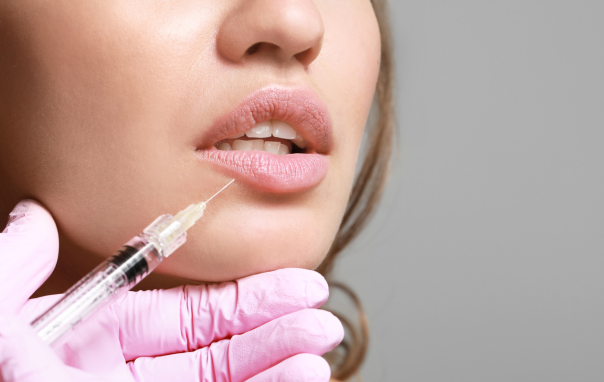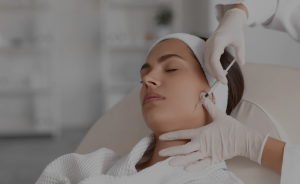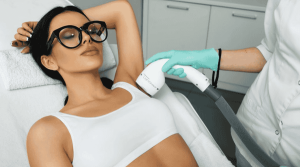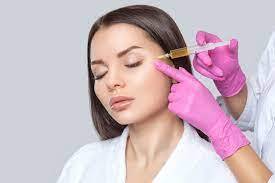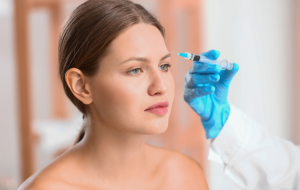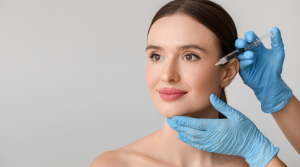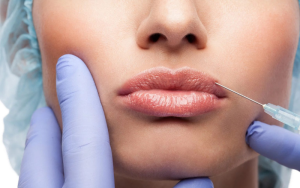Lip fillers have rapidly become one of the most sought-after cosmetic procedures for creating a youthful appearance and adding volume to the lips. Whether you are looking to reduce the appearance of wrinkles around your mouth, correct asymmetries, or achieve a fuller pout, modern injectable treatments offer numerous benefits with minimal downtime. However, to make an informed decision, it’s essential to understand the types of lip fillers available, the risks and potential side effects, and how long results typically last. This comprehensive guide will explore everything you need to know before taking the plunge.
Understanding Lip Filler
Lip fillers are dermal filler injections designed to add lip volume, smooth out lines, and refine the shape of your lips. They typically comprise filler products that are carefully injected into the lip tissue to achieve the desired fullness. These injections with lip fillers can also help reduce the appearance of facial wrinkles or frown lines around the mouth and offer a subtle lift. Whether you seek a slight subtle enhancement or more dramatic lip enhancements, the goal remains the same: to highlight your natural beauty while aligning with your aesthetic goals.
Lip filler procedures are considered non-surgical procedures compared to other lip augmentation methods like lip implants or Fat grafting. The temporary nature of lip filler treatments makes them attractive to many individuals, as the results can be tweaked, reversed, or refined over time. Another advantage is that modern hyaluronic acid lip fillers are generally safe when administered by a qualified injector, providing a quick boost to collagen production in the target area.
Different Types of Lip Filler
Hyaluronic Acid Fillers
Hyaluronic acid-based fillers are the most common filler type for lip augmentation due to their safety profile and natural appearance. Common brand names include Juvéderm Ultra, Juvéderm Volbella, and Juvederm Ultra XC. These acid fillers use a natural substance found in the human body, making allergic reactions less likely. They absorb water, giving the lips a fuller appearance while minimizing volume loss over time. Additionally, hyaluronic acid is a hydrophilic product, drawing moisture to the lips for a more hydrated effect. The outcomes usually last from six months to a year, depending on the type of filler used and individual factors like metabolism.
Key advantages of hyaluronic acid fillers
- Reversible: If the results are not as expected, an enzyme called hyaluronidase can dissolve the filler.
- Minimal Risk of Allergies: Since HA is naturally present in connective tissue, adverse reaction rates are low.
- Customizable Volume: Skilled expert injectors can tailor lip shape and fullness.
Calcium Hydroxylapatite Fillers
Calcium Hydroxylapatite Fillers (e.g., Radiesse) are more commonly used for deeper wrinkles or facial contours but can be used off-label for lip augmentation. Comprising microscopic calcium-based particles suspended in a gel, these fillers tend to last longer—often over a year, though their use in the lips requires an experienced injector due to the risk of nodules or uneven placement. Because of its consistency, calcium hydroxylapatite may offer a more structural lift but is less commonly chosen for lips compared to hyaluronic acid fillers.
Other Types of Lip Filler
- Poly-L-lactic Acid (e.g., Sculptra): Stimulates your own collagen formation but is more frequently used to correct volume loss in larger facial areas.
- Bovine Collagen: An older method that has largely been replaced by safer hyaluronic acid-based fillers, as it carries a higher risk of allergic reactions.
- Permanent Silicone Implants: These require surgical procedures and carry higher risks, including risk of infection or implant rejection.
- Fat Injections (Fat Transfer): Involves removing fat from another body part and injecting it into the lips. While it can offer permanent results, fat injections are more invasive, requiring liposuction and a longer recovery time.
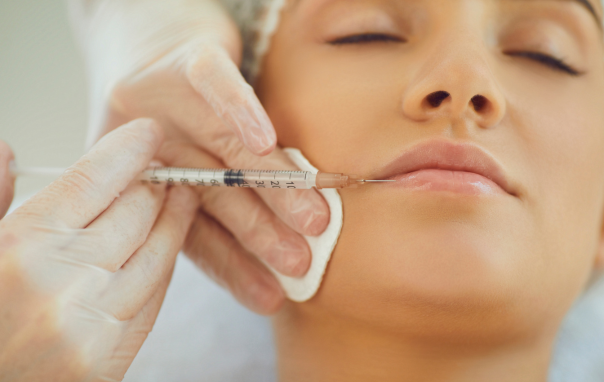
Factors Affecting Lip Filler Longevity
Individual Metabolism
Each person’s body processes injectable filler differently. Your metabolic rate, overall health, blood flow, and even blood pressure can influence how quickly the filler breaks down. In general, those with faster metabolisms might see the filler dissolve slightly faster.
Lifestyle Choices
Lifestyle habits, such as frequent exercise, sun exposure, or smoking, can affect how long your filler lasts. High-intensity workouts may speed the body’s breakdown of the filler, while poor skincare habits may also diminish results. Additionally, taking certain supplements like fish oil or medications like blood thinners can influence your body’s response to filler.
Injection Technique
The injection technique plays a vital role in lip filler longevity. Skilled nurse injectors, medical injectors, or a qualified plastic surgeon will use advanced injection techniques to ensure an even distribution and reduce the chance of lumps or vascular compromise. Incorrect or overly superficial placement of the filler by an inexperienced injector can lead to quicker breakdown, uneven results, or extreme swelling.
Typical Duration of Lip Filler
Expected Lifespan for Each Type of Lip Filler
- Hyaluronic Acid Fillers (e.g., Juvederm Ultra XC, Juvederm Volbella XC): Usually 6–12 months.
- Calcium Hydroxylapatite Fillers: May last 12–18 months in areas like the cheeks, but the duration in lips can vary.
- Poly-L-lactic Acid: Offers results for up to two years, but generally used for large-area volume over time.
- Bovine Collagen: Rarely used now due to allergic reactions and short lifespan of around 3–6 months.
- Fat Transfer: Results can be longer lasting, even permanent, but outcome can be unpredictable due to fat reabsorption.
Signs You May Need a Touch-Up
- Loss of Fullness: Lips start to revert to their original lip shape or volume.
- Increased Vertical Lines: If lines around the mouth begin reappearing, it may be time for another dermal filler procedure.
- Uneven Areas or Asymmetry: Natural reabsorption can sometimes occur unevenly, requiring regular touch-ups for consistent results.
Touch-ups are commonly performed every 6–9 months for hyaluronic acid fillers, although some individuals may wait longer or prefer a different schedule based on their treatment goals.
Recovery Process After Lip Filler Injections
Initial Healing Period
Immediately after lip filler injections, you can expect mild swelling, minor bruising, and possibly mild discomfort. These common post-injection reactions typically subside within a couple of days to a week. Applying an ice pack for 10–15 minutes at a time can help reduce swelling and risk of infection at the injection sites.
During the first 24–48 hours, avoid activities that increase blood flow to your face, such as strenuous exercise or saunas, as these can exacerbate swelling or bruising. Using a numbing cream prior to the lip injection procedure often helps minimize pain, making the entire medical procedure more comfortable.
Long-Term Care Tips
- Hydration: Keeping your lips and body well-hydrated helps maintain the natural fullness of your filler.
- Sun Protection: Excessive sun exposure can accelerate filler breakdown and degrade the connective tissue in your lips.
- Oral Hygiene: Maintaining good hygiene can reduce the chance of cold sores or infection. If you’re prone to cold sores, consult your healthcare provider about antiviral prophylaxis.
Aftercare Tips for Prolonging Lip Filler Results
Avoiding Certain Activities
- Kissing and Straws: Avoid excessive puckering or pressure on your lips for about 24 hours post-treatment to allow the filler to settle.
- Blood Thinners and Supplements: Try to avoid nonessential supplements like fish oil or herbal medications that can exacerbate bruising, unless approved by your provider.
- Intense Heat: Steam rooms, saunas, or hot yoga can potentially speed up filler degradation.
Recommended Products
- Lip Balms or Lip Masks: Products enriched with hydrating ingredients can help retain moisture, preserving the lip volume.
- Skincare with SPF: Sun damage can reduce the lifespan of the filler, so using SPF around the mouth is crucial.
- Gentle Cleansers and Moisturizers: Maintaining overall skin health around the lips can support the production of collagen and keep tissues in optimal condition.
Common Misconceptions About Lip Filler
Pain and Discomfort Myths
Many believe that lip injections are extremely painful. However, modern filler products often contain a small amount of lidocaine to minimize discomfort. Additionally, applying a topical anesthetic or anesthetic cream before the lip filler procedure can further reduce pain. Most patients report only minor swelling and manageable tenderness during recovery.
Safety and Risks
While all cosmetic treatments carry some risks, lip fillers administered by a skilled injector or a cosmetic surgeon generally have a high safety profile. The risk of infection or vascular compromise (interruption of blood supply) is very low but real, emphasizing the importance of choosing a qualified injector over untrained providers who might offer discounted filler rates. Additionally, healthcare provider guidelines in countries like Canada (via Health Canada) ensure that approved filler brands meet safety standards.
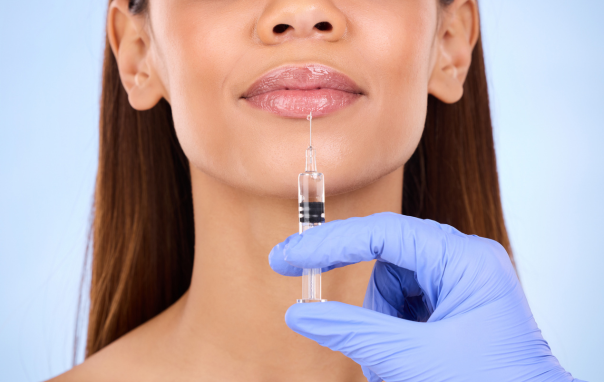
Importance of Consulting a Qualified Provider
Choosing the Right Practitioner
Whether you opt for a nurse injector, a board-certified plastic surgeon, or a specialist in cosmetic medicine, the person performing your lip augmentation procedure is critical to the success of your injections for lip augmentation. Look for:
- Credentials: Ensure they are a licensed health care provider who is trained in advanced techniques.
- Reputation: Check for a history of successful outcome and patient satisfaction.
- Experience: Seek out practitioners who regularly perform dermal filler treatments and are familiar with the type of filler used for lips.
Questions to Ask Before Lip FillerTreatment
- “Which Brands of Lip Filler Do You Use?”: Reputable fillers include Juvéderm, Juvederm Volbella, and others with proven safety records.
- “What Experience Do You Have with Lip Filler Treatments?”: Experienced expert injectors are less likely to cause complications.
- “Am I a Suitable Candidate for Lip Fillers?”: An honest initial consultation should assess your health, medical conditions, and aesthetic goals.
- “What Will My Recovery Period Look Like?”: Knowing the recovery guidelines helps you plan around a busy schedule and lunch breaks.
Why Choose Beauty Aesthetics, Toronto for Lip Filler?
At Beauty Aesthetics, Toronto, we prioritize patient comfort, safety, and results that align with your treatment goals. Our clinic operates as part of a network of clinics committed to best practices, offering an array of cosmetic injectables ranging from hyaluronic acid lip fillers like Juvederm Ultra and Juvederm Volbella to more specialized solutions for deeper lines. Our experienced injector team, which includes certified medical injectors, uses advanced techniques—such as the Microdroplet Technique—to achieve subtle enhancement or dramatic lip enhancements based on your personal preferences.
We begin every procedure with a thorough complimentary consultation, ensuring you receive a personalized approach that considers your skin type, conditions, and chronic conditions if any. Throughout the entire procedure, from Pre – treatment to aftercare, our focus remains on delivering a natural shape that elevates your facial harmony. Our focus on patient education regarding filler, risks, and recovery time sets us apart, making Beauty Aesthetics, Toronto, a trusted destination for your lip filler journey.
Conclusion and Final Thoughts
Lip fillers can offer a gentle lift in lip volume, reduce marionette lines, and address deeper wrinkles—all while providing a quick boost of fullness for those seeking a natural appearance. By understanding types of lip fillers, filler longevity, and best practices for care, you set yourself up for a successful outcome. Always choose a qualified injector and undergo a thorough consultation to ensure your aesthetic goals are met safely. With routine touch-ups and mindful aftercare, lip fillers can deliver consistently beautiful enhancements that celebrate your natural fullness and confidence.

